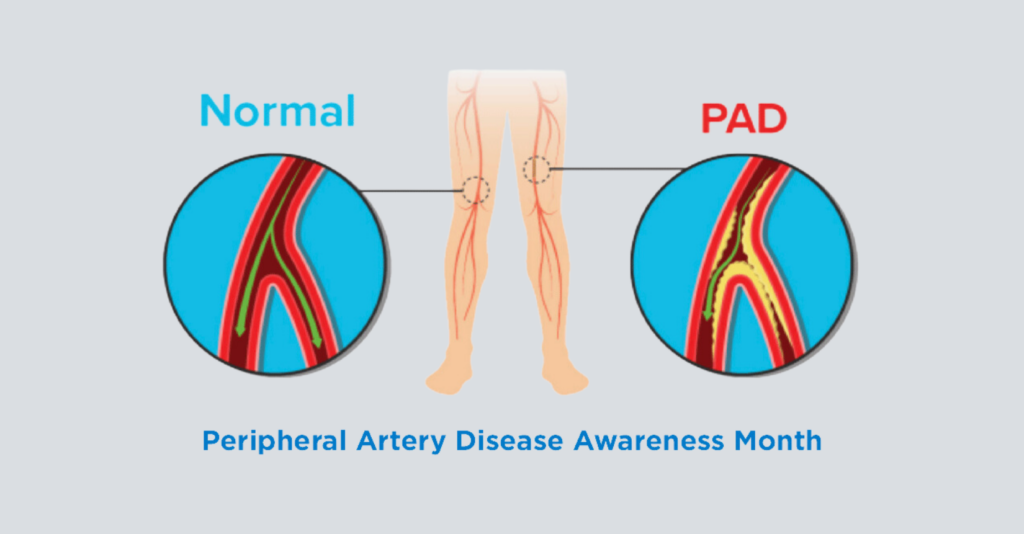The Crucial Role of Early Diagnosis and Treatment in Peripheral Artery Disease: Reducing Amputation Risk and Improving Outcomes
September 2 2024
Peripheral artery disease (PAD) is a common circulatory problem that affects millions of people, particularly those over the age of 50. It occurs when the arteries that supply blood to the limbs, primarily the legs, become narrowed or blocked due to the buildup of fatty deposits, also known as plaque. This reduction in blood flow can lead to a variety of health issues, some of which can be life-threatening if not addressed promptly. Early diagnosis and treatment are crucial in improving outcomes and reducing the risk of severe complications, including amputations.
The Importance of Early Diagnosis
One of the most significant challenges in managing PAD is that it often goes undiagnosed. The early stages of PAD can be asymptomatic or present with vague symptoms such as leg pain, cramping, or fatigue during physical activity, which many people mistakenly attribute to aging or other non-serious conditions. However, these symptoms are often the first signs that the arteries are becoming narrowed and that blood flow is restricted.
Early diagnosis is essential because PAD is a progressive disease. Without intervention, the condition can worsen over time, leading to more severe symptoms such as persistent pain, wounds that won’t heal, and even gangrene. In advanced stages, PAD can lead to critical limb ischemia, a severe blockage in the arteries that drastically reduces blood flow and increases the risk of tissue damage and amputation.
Diagnostic Tools and Techniques
Healthcare providers can use several diagnostic tools to detect PAD in its early stages. One of the most common methods is the ankle-brachial index (ABI), a simple, non-invasive test that compares the blood pressure in the ankle with the blood pressure in the arm. A lower pressure in the ankle may indicate the presence of PAD.
Other diagnostic tools include Doppler ultrasound, which uses sound waves to visualize blood flow in the arteries, and angiography, an imaging technique that provides a detailed view of the arteries and helps identify blockages or narrowing. In some cases, blood tests may be used to check for risk factors like high cholesterol and diabetes, which are closely linked to the development of PAD.
Treatment Options for PAD
The goal of PAD treatment is to improve blood flow, relieve symptoms, and prevent complications. The treatment plan often includes lifestyle changes, medications, and in some cases, surgical interventions.
1. Lifestyle Changes: Quitting smoking, adopting a healthy diet, regular exercise, and managing underlying conditions like diabetes and high blood pressure are crucial in managing PAD. Exercise, in particular, helps improve circulation and can reduce symptoms.
in particular, helps improve circulation and can reduce symptoms.
2. Medications: Several medications can help manage PAD, including cholesterol-lowering drugs, blood pressure medications, and antiplatelet agents that reduce the risk of blood clots. Medications that specifically target symptoms, and can also be prescribed to improve walking distance and reduce leg pain.
3. Surgical Interventions: In more severe cases, surgical procedures such as angioplasty, stenting, or bypass surgery may be necessary to restore adequate blood flow to the affected limbs. Angioplasty involves using a small balloon to widen the artery, often accompanied by the placement of a stent to keep the artery open. Bypass surgery creates a new pathway for blood to flow around the blocked artery.
Reducing the Risk of Amputation
One of the most severe complications of PAD is the risk of amputation, particularly in individuals who develop critical limb ischemia. However, with early diagnosis and appropriate treatment, the risk of amputation can be significantly reduced. By improving blood flow and addressing the underlying causes of PAD, patients can maintain mobility, avoid severe complications, and enjoy a better quality of life.
Peripheral artery disease is a serious condition that requires timely attention to prevent severe complications, including the risk of amputation. Early diagnosis is key to managing the disease effectively, and a combination of lifestyle changes, medications, and surgical interventions can help improve outcomes. If you or a loved one are experiencing symptoms of PAD, it’s essential to seek medical advice promptly. With proper care, you can take control of your vascular health and reduce the risk of life-altering complications.
At NaplesPodiatrist.com, we specialize in diagnosing and treating PAD to help our patients achieve the best possible outcomes. Contact us today to schedule a consultation and take the first step towards better vascular health.
Serving Southwest Florida Since 2005, Family Foot & Leg Center has 9 convenient locations throughout Collier, Lee, Charlotte, and Sarasota Counties. Offering pediatric to geriatric family care: Ingrown Toenails, Heel Pain, Bunions, Foot / Ankle Arthritis Pain, Plantar Fasciitis, Foot / Ankle Surgery, Custom Orthotics, and Diabetic Wound Care. In office X-rays, ultrasounds, and minor surgical suite exam rooms. Practice powered by EMR and advanced technologies. Home of the Lam Minimally Invasive No-Scar Bunion Surgery! Come Discover Why Patients Love Our 5-Star Foot & Ankle Care! Same Day Appointments! Easy Online Appointment Scheduling

 Fax: (239) 692-9436
Fax: (239) 692-9436 Tel: 239-430-3668
Tel: 239-430-3668


